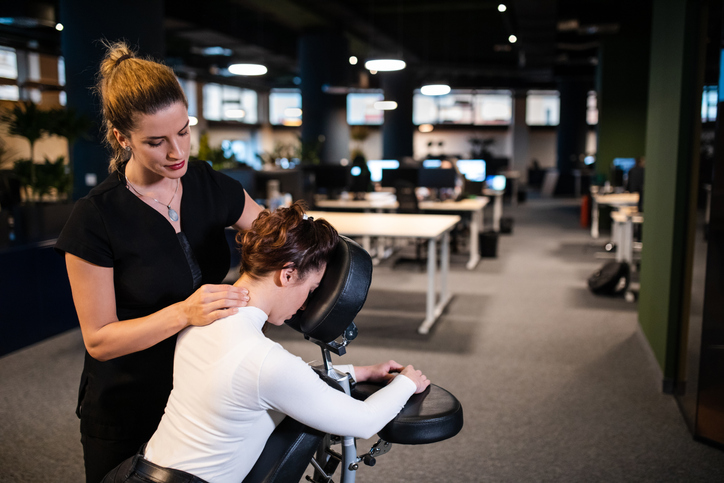Pain
Alternative and Complementary Treatments for Neck Pain

Approximately seven out of 10 people will experience neck pain (cervicalgia) at some point in their lives. Pain ranges from mild to severe and can be acute (lasting days to weeks) or chronic (lasting longer than three months). The causes of neck pain are varied and diverse. Pain can develop for numerous reasons, including but not limited to, poor posture, osteoarthritis, nerve compression, bone spurs, muscle strains, injuries like whiplash, or conditions such as rheumatoid arthritis.
Depending on the cause of neck pain, a health care provider may recommend conservative medical treatment or surgical treatment. Alternative and complementary treatments are also available. Because the causes of neck pain range from fairly benign (e.g., poor posture) to very serious (e.g., meningitis), a health care provider should always be consulted regarding appropriate treatment.
Alternative and complementary treatments for neck pain
Alternative and complementary treatments for generalized neck pain include the following:
- Massage therapy
Massage therapy promotes relaxation and helps reduce muscle tension or spasms. Deep tissue massage can help relieve specific points of tension (trigger points).
Self-massage can provide immediate relief to targeted areas and can be useful between massage therapist visits. Using the fingers to apply gentle pressure to the painful area of the neck and moving the fingers in slow circular motions can help ease pain. Pressure intensity can be gradually increased as tolerated. - Chiropractic treatment
Chiropractic treatment involves hands-on manipulation of the spine or other joints. Spinal manipulations or mobilizations of the neck can improve range of motion and reduce pain. Chiropractic treatment is particularly effective for acute neck pain. Before undergoing this treatment, a physician should be consulted to rule out spinal instability. - Biofeedback
Biofeedback is a type of therapy that involves the use of technology to monitor involuntary body responses, such as heart rate and muscle contractions, with the goal of learning to control these responses to relax muscles and reduce pain.
More specifically, electromyogram biofeedback measures muscle tension. Sensors are placed on skeletal muscles to measure electrical activity that causes muscles to contract. It can be used as a treatment for headaches and neck pain. - Acupuncture
Acupuncture, a practice of traditional Chinese medicine, involves strategically placing thin needles into the skin to help rebalance the flow of energy (Qi) in the body. In Western medicine, acupuncture is thought to work by stimulating certain nerves, muscles, and connective tissues to boost the production of endorphins (the body’s natural painkillers). Acupuncture is commonly used for neck pain.
It’s important to note that a qualified medical professional should be consulted to properly diagnose the cause of neck pain before considering alternative and complementary treatments.


















